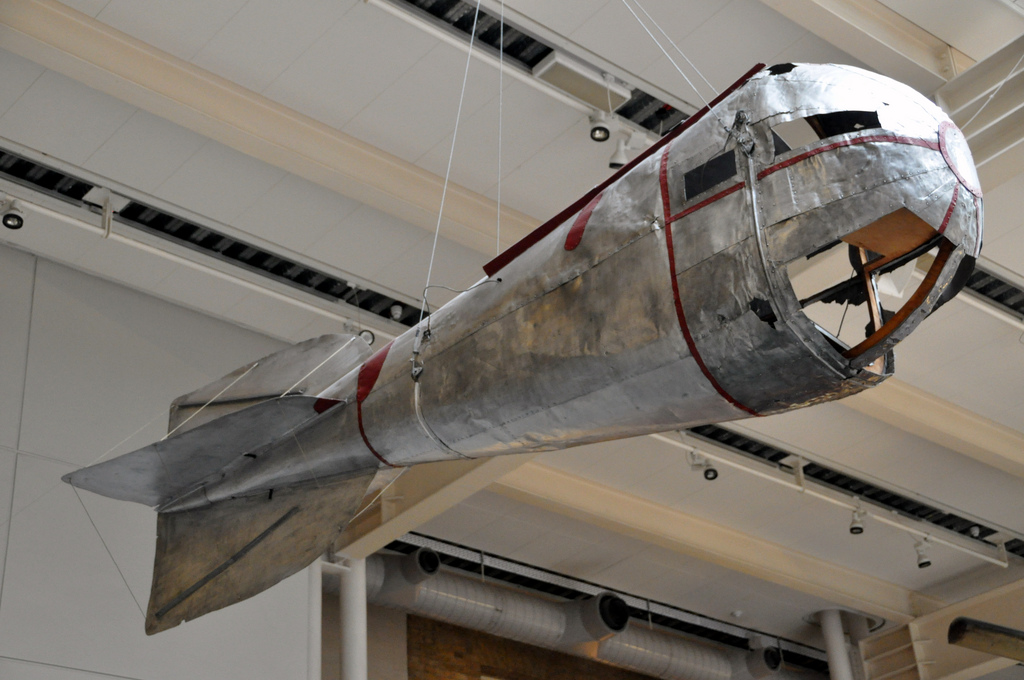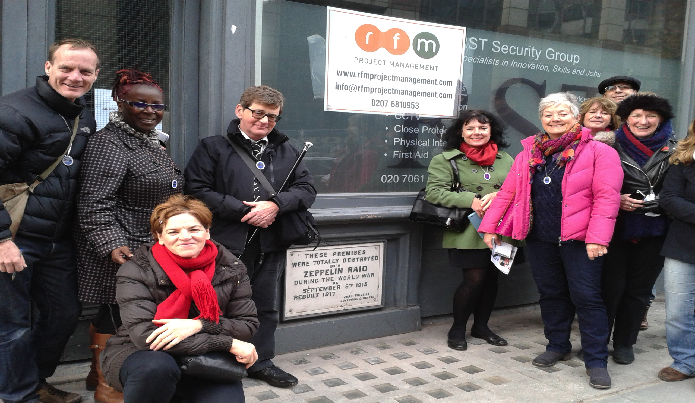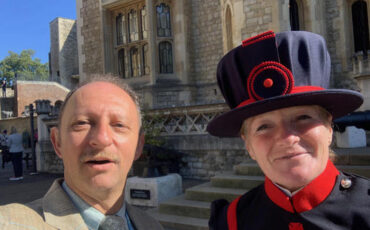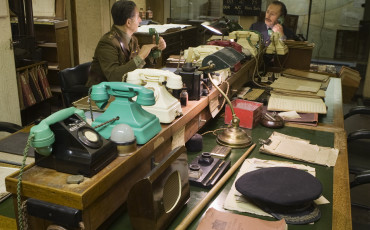In commemorating of the centenary of the First World War, much of our attention has been focused on the soldiers that fought and died in foreign lands in what was described as a war to end all wars. Simon Rodway’s walking tour from Holborn to Liverpool Street on 11 November 2014 made us look at the events closer to home – the deadly menace that was the Zeppelin air ships that flew almost silently over the London sky in 1915 wreaking havoc on the unsuspecting Londoners below by launching the first of many incendiary bombs here in London and other parts of England. It was to be known as the Year of the Zeppelin. The catastrophe that befell London lasted 20 minutes but our walk would take a little longer.
The first air raid took place in the East End on 31 May 1915 but we were following the trail of the L13 Zeppelin commanded by Lieutenant Heinrich Mathy, one of the great airship commanders of the First World War, on 8 September 1915. One of the incendiary bombs landed on The Dolphin Tavern situated adjacent to Red Lion Square. The pub is still there; peeking through the window it was possible to see the original clock that hung in the public bar on that fateful day. The smoke damaged clock face frozen in time recording the moment the bombed landed on the pub killing three men – 10.40.

Via the Imperial War Museum, an observation car that was lowered from a German zeppelin during World War I for bombing missions over England. Photo:©Flickr/Kevin Harber.
As we wended our way through the streets and occasional public garden, the hidden and nearly forgotten events of those air raids upon London and the efforts to stop the German assault from the sky came to life through Simon’s wonderful story telling and personal accounts. What of Lieutenant Heinrich Mathy who created sheer terror from up on high? 1 October 1916, Germany loses its most successful airship captain when his Zeppelin was shot down over Potters Bar.
Our final stop proved to be a fitting end but also a thought provoking moment. The Great Eastern War Memorial in Liverpool Street Station commemorates those members of the Great Eastern Railway who lost their lives in the First World War. The memorial also incorporates two smaller memorials, one to MP Field Marshall Sir Henry Wilson, who unveiled the memorial, and was then assassinated by two members of the Irish Republican Army on his return home from the ceremony, thus exposing another intriguing thread of British History!

Blue Badge Tourist Guides (left to right): Phillip Wigan, Angela Morgan, Rumiana Longobardi, Simon Rodway, Deborah Charles, Sue Hadley, Mary Cook, Rob Humphreys, Maureen Corcoran. Photo: ©Marilyn Collis.
Note: If you are interesting in joining a World War One walk led by a professional Blue Badge Tourist Guide, then check out the First World War Walks in Britian website for upcoming dates.







Leave a Reply